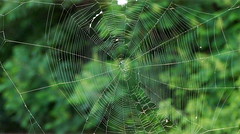[kml_flashembed movie="http://www.youtube.com/v/KB9vRYyOfz8" width="425" height="350" wmode="transparent" /]
This video (3 in one) of the forum at Stanford University, "From MySpace to HipHop: new media in the everyday lives of youth", delves into a subject that I'm compulsively drawn to - social networking and the implications of these new ways of connecting. The questions that come out of these presentations are vital to our understanding of youth in order to evaluate and re-evaluate our teaching and learning programs. Some of these questions are:
Are we seeing an evolution to a new kind of engaged community?Should we be enthused about the ubiquitous nature of digital media or should we be deeply concerned?As educators, how can we spark the same engagement and motivation that we see on MySpace and Facebook?Are young people changing through their participation with digital media?How does this change their relationship to school and home life?Why do they participate in digital communities rather than real life?
Although the research study presented here doesn't tell us what to do, only what we need to know, I think that it's vital to realise what we need to know. Our familiarisation with Web 2.0 applications is only the beginning of a new direction in education. More importantly, we need to understand why we are doing this and what else we need to find out. One of the speakers points out that we may be at an inflection point where change is accelerating and old ways disappearing, where systems are no longer working, indescribable innovation is becoming possible. If this is true, then we need to understand it and we need to understand the good and the bad, and we need to harness it.
I've spoken about the significance of audience for young people. The first speaker makes an important point - Web 2.0 and what young people do within this environment is inextricably tied with who they make it for and with. MySpace and Facebook enable deeply social activity not driven by the technology itself. Network publics are an extension of youth's existing publics. How does this change young people's relationship to school and home life?
I'm going back to the question I was asked at my recent interview: how do we get to know adolescents?
This question is at the heart of the research presented here. The goal of the research is to understand these changes from the point of view of youth themselves. As the first speaker said, before we can design our own adult-centred agendas for education, we have to try to take young people's agendas and experiences seriously on their own terms.
Have a look at Heather Horst's submission to the website Digital youth research. I found this link on Hey Jude. Thanks.








